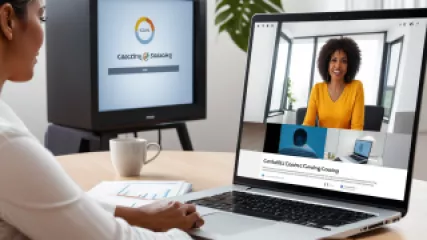How Can I Improve My Conflict Management Skills with Effective Coaching?
Conflict is an inevitable part of life, whether it's in our personal relationships or professional interactions. The way we handle conflict can greatly impact the outcome and our overall well-being. If you find yourself struggling to effectively manage conflicts and are looking for ways to improve your skills, effective conflict resolution coaching can be a valuable resource. In this article, we will explore how effective coaching can help enhance your conflict management techniques, providing you with the tools and strategies needed to navigate challenging situations.
Understanding Conflict Management
Before diving into the benefits of effective coaching, let's first establish a clear understanding of conflict management. Conflict management involves the process of addressing and resolving disputes or disagreements in a constructive manner. It aims to find mutually acceptable solutions while maintaining healthy relationships.
Conflict can arise due to various reasons such as differences in opinion, values, or goals. It can also stem from miscommunication, misunderstandings, or competing interests. Regardless of the cause, conflict management techniques help individuals navigate these challenges and find resolutions that are fair and satisfactory for all parties involved.
The Role of Effective Coaching
Effective coaching plays a crucial role in enhancing conflict management skills. It provides individuals with personalized guidance, support, and practical strategies to effectively handle conflicts. Here are some ways in which effective coaching can help improve your conflict management skills:
- Self-Awareness: Effective coaching helps you develop a deeper understanding of your own responses and reactions during conflicts. By exploring your triggers, biases, and communication patterns, you can gain insight into your behavior and make conscious efforts to change unproductive habits.
- Communication Skills: One of the key aspects of conflict management is effective communication. Coaching can help you enhance your communication skills, including active listening, expressing yourself assertively, and fostering open dialogue. These skills enable you to better understand others' perspectives and express your own needs and concerns in a constructive manner.
- Emotional Intelligence: Conflict often triggers intense emotions that can cloud judgment and hinder resolution. Effective coaching can help you develop emotional intelligence, allowing you to recognize and manage your emotions during conflicts. By cultivating empathy and understanding, you can navigate conflicts with greater empathy and compassion.
- Problem-Solving Techniques: Coaching equips you with effective problem-solving techniques that enable you to approach conflicts with a solutions-oriented mindset. You will learn how to identify the underlying issues, generate alternative options, and collaboratively work towards mutually beneficial outcomes.
- Managing Difficult Personalities: Conflict situations can involve challenging personalities that may exacerbate tensions. Through coaching, you can learn strategies for managing difficult individuals and de-escalating conflicts. This can include techniques for setting boundaries, active de-escalation, and finding common ground even with individuals who may seem resistant to cooperation.
Virtual Conflict Resolution Therapy
In today's digital age, virtual conflict resolution therapy has become increasingly popular. It offers the convenience of receiving coaching and guidance from the comfort of your own home, office, or any location of your choice. Virtual therapy sessions are conducted through secure video conferencing platforms, allowing you to connect with experienced conflict resolution coaches regardless of geographical constraints.
Virtual conflict resolution therapy offers numerous benefits, including:
- Accessibility: Virtual therapy eliminates the need to travel to a physical location, making conflict resolution coaching accessible to individuals who may have mobility limitations or live in remote areas.
- Flexibility: With virtual therapy, you have greater flexibility in scheduling sessions. This flexibility allows you to find a time that works best for you, ensuring that you can prioritize your personal and professional commitments.
- Comfort: Being in a familiar environment during therapy sessions can create a sense of comfort and security. This can contribute to a more open and effective coaching experience.
- Confidentiality: Virtual therapy platforms prioritize privacy and confidentiality, ensuring that your sessions remain secure and confidential.
Choosing an Effective Conflict Resolution Coach
When seeking effective conflict resolution coaching, it's essential to choose a coach who aligns with your needs and goals. Here are some factors to consider when selecting a conflict resolution coach:
- Experience and Qualifications: Look for a coach who has relevant experience and qualifications in conflict resolution. They should have a deep understanding of conflict dynamics and possess the necessary skills to guide you effectively.
- Coaching Approach: Each coach may have a different coaching style and approach. It's important to find a coach whose methods resonate with you and align with your learning preferences.
- Rapport and Trust: Building a strong rapport and trust with your coach is crucial for a successful coaching relationship. Consider having an initial consultation or conversation to assess if you feel comfortable working with the coach.
- Client Testimonials: Reading client testimonials or reviews can provide insights into the coach's effectiveness and the impact they have had on their clients' conflict management skills.
Conclusion
Improving conflict management skills through effective coaching can have a profound impact on various aspects of your life. By developing self-awareness, enhancing communication skills, and cultivating emotional intelligence, you can navigate conflicts more effectively and foster healthier relationships. Virtual conflict resolution therapy offers accessible and flexible options for receiving coaching support, regardless of geographical limitations. Choose a conflict resolution coach who understands your unique needs and goals, and embark on a journey of growth and transformation in your conflict management skills.






